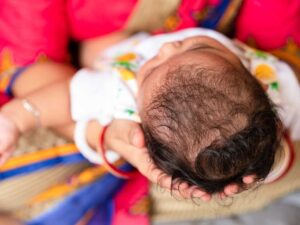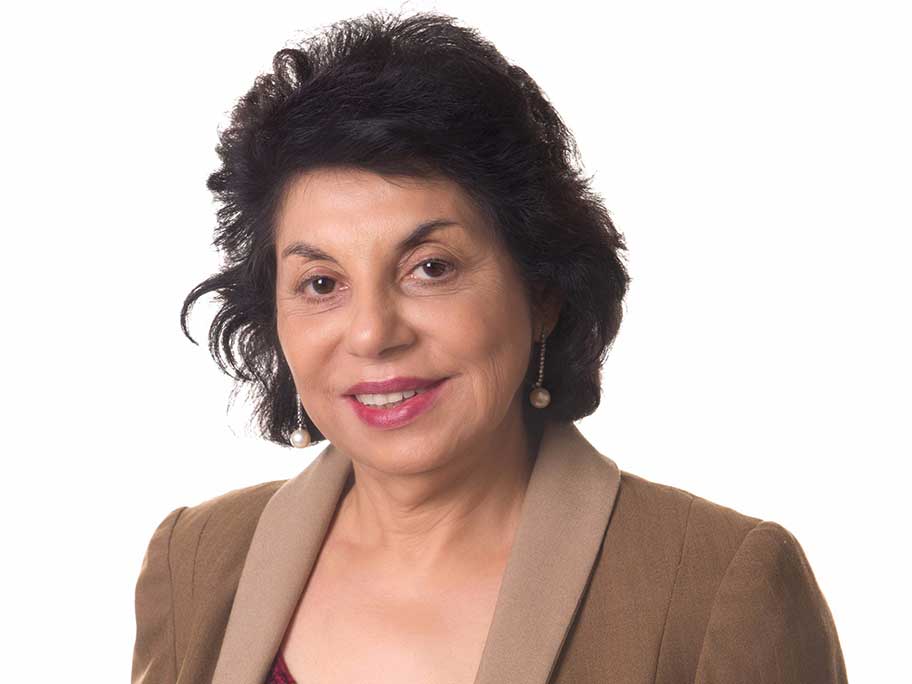For women like Priya, becoming pregnant with a girl is a failure of family duty

Priya* was in her 20s when she married a man she had never met.
Her parents paid about $20,000 and 300g of gold jewellery as a dowry — a traditional but illegal transaction that smooths the path for many Indian marriages.
Priya left her home in India and arrived in Australia, where her new husband lived with his brother’s family.
But within a few months, she says, she faced harassment that caused her marriage to break down and her newborn baby to suffer health problems, all because she became pregnant with a girl.
She is one data point in worrying statistics on Australian migrant families.
A study published in PLOS Global Public Health this May showed a skewed sex ratio among certain Australian migrant communities, including Indians, based on 1994 to 2015 data.
In Australia, newborns from Indian-born mothers were 7% more likely to be male than female, the study found.
Among mothers whose first children were girls, second children were 14% more likely to be male than female.
For a third birth after two girls, the difference was 31%.
Indian-born mothers also had more early pregnancy abortions than Australian-born mothers, the Curtin University-led team found.
They did not believe this was a coincidence.
“The sex ratio at birth for Australian-born mothers remains fairly constant, and the markedly skewed sex ratio at birth among certain migrant communities almost certainly points to human intervention,” lead author Dr Amanuel Gebremedhin (PhD) said in a statement.
These high abortion rates coincided with non-invasive prenatal testing (NIPT) becoming widely available, the study said.
For Priya, learning the sex of her unborn baby marked the beginning of her life’s unravelling.
The overt hostility began when her in-laws flew in from India.
“It started with food. I craved certain foods, but they told me I didn’t deserve them while carrying a girl. That I should be ashamed of asking,” she told AusDoc.
She was told she was a source of bad luck and that she could not ease up on housework as her pregnancy went on.
“They would tamper with the food I cooked — add extra salt behind my back — and then complain that I didn’t know how to cook. Then the men would shout at me.
“Every mistake I made was tied back to my baby being a girl.”
Knowing what her family had spent on the wedding, Priya felt that leaving the marriage would let her family down.
She said her husband always accompanied her to GP appointments.
“When the doctor would ask if everything was okay at home, I couldn’t say anything.”
She said that when her baby was born, doctors told her that prenatal stress had contributed to her baby’s health complications**.
Priya said her child was the first girl born in her husband’s family in three generations.
Melbourne psychiatrist Dr Manjula O’Connor said Priya’s experience was part of a pattern.
Dr O’Connor said she had known patients who were forced to abort pregnancies by their husbands’ families after NIPT or ultrasound showed a baby girl.

“Families, especially the husband’s parents, are continuously involved in every decision before the marriage, during the marriage, after the marriage. There is so much pressure put upon the new daughter-in-law in lots of different ways,” Dr O’Connor told AusDoc.
Domestic abuse and pressure to produce a boy often coexisted, she said.
After data in India showed a highly skewed sex ratio, the Indian Government banned prenatal sex determination in 1994. It also banned IVF sex selection in 2003. Under these laws, the sex ratio stabilised.
Dr O’Connor said that the cultural preference for sons stemmed from deeply rooted ideas: sons stay in the family home, care for ageing parents and carry on the family name.
Daughters, by contrast, often marry out, require dowries and are considered a financial burden, she said.
Dr O’Connor said many Indian women in arranged marriages arrived in Australia on dependent visas, financially and socially isolated. GPs were often their first and only point of contact with ‘the system’.
However, she said abortion providers worried about appearing racist if they probed whether an abortion was for sex selection.
In a 2020 NSW Health review into underground sex-selective abortions, one practitioner pointed out: “There is no real practical way of preventing this practice as no reason for abortion needs to be given currently, so parents can just stay quiet.”
Several abortion providers suggested sex information should be withheld unless clinically relevant.
The review did not recommend this.
It concluded the practice was so rare it would not skew Australia’s sex ratio, without addressing the prevalence within specific ethnic groups.
Dr O’Connor said skewed sex ratios were bad for communities.
“By interfering with the natural process, resulting in more males than females in society, there is a greater chance of patriarchy, domestic violence and sex-related crime.
“Daughters grow up watching their parents desperately trying to have a boy and feeling that their parents do not value them.
“They witness the preferential treatment that men in their families get and learn that they are always secondary to the men in the family.”
For Priya, she left her husband when her mother-in-law tried to hit her. She locked herself and her baby in a room and contacted her sister, who also married an Indian man in Australia.
“I decided I was never going back,” Priya told AusDoc.
Now, more than a year since she left, she lives with her toddler while studying and working part-time, with support from her sister.
She wishes she had known that a GP could have helped her get the support she needed.
“I think if GPs find a woman born outside Australia who is always accompanied by a family member, they should take them aside and give them information,” she says.
She remains separated from her husband.
However, he has visitation rights to see their child.
“I’m scared for my daughter,” Priya says.
“They never wanted her. What if they hurt her?”
*Name changed
**AusDoc has not described the health complications in order to protect Priya’s identity.
Read more: US specialist tours Australia spruiking IVF sex selection
More information: PLOS Glob Public Health 2025; 28 May.

